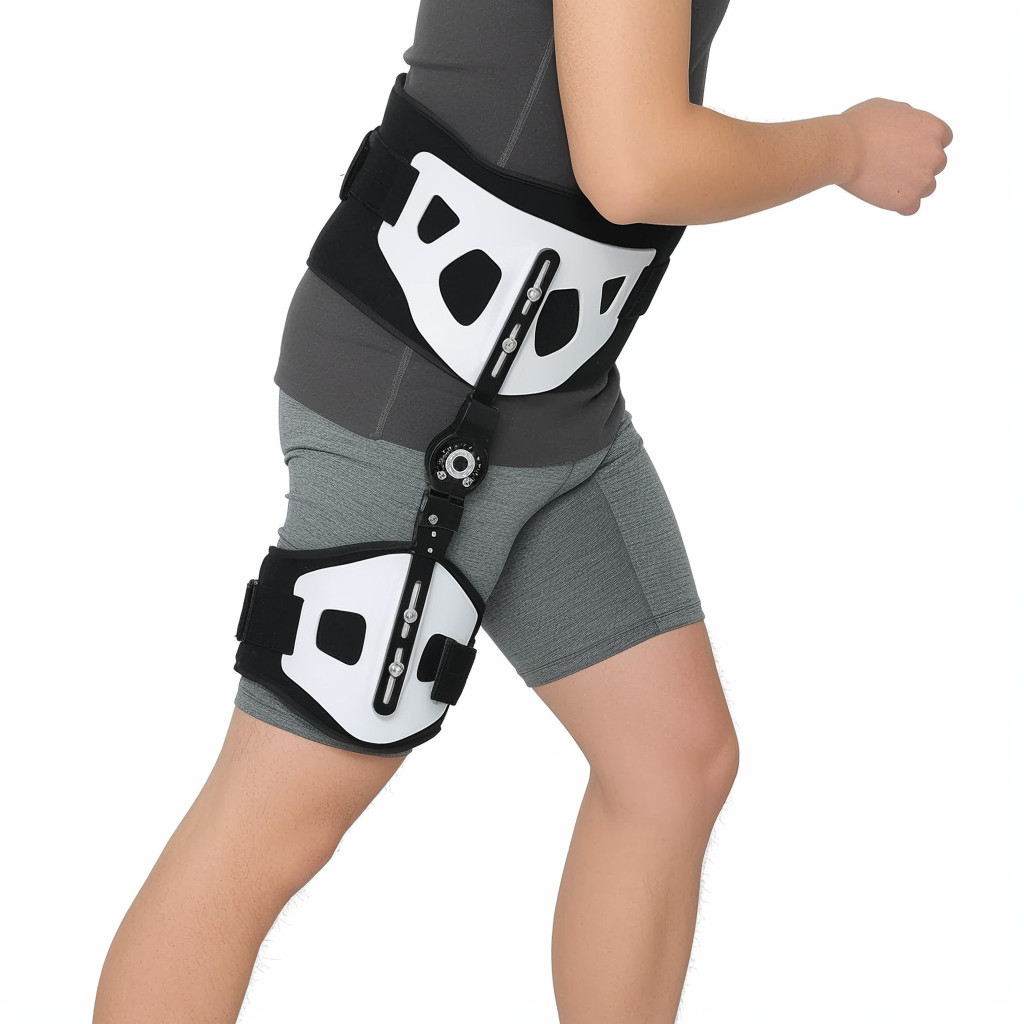
Understanding Hip Braces: A Guide to Orthotic Support
Hip splints and braces are orthotic devices used for supporting and stabilizing the hip and pelvic regions, especially after surgeries, injuries, or in conditions affecting these areas. They correctly align the body parts, providing necessary support during the healing process. There are various types of hip braces, each tailored for specific purposes:
Hip Stabilizers and Braces: These are general terms for devices that support the hip area. They help in keeping the hips level for safe healing. A common type is the hip abduction brace, which holds the thighbone securely in the hip socket and maintains a specific angle between the hips and knees.
Hip-Knee Braces: These braces extend support to both the hip and knee areas. They consist of a soft band or sleeve around the thigh connected to the hip component, ensuring proper alignment and support.
Enhanced Details: The design of these orthotics takes into account the different anatomical structures and biomechanical needs. For instance, hip abduction braces help reduce stress on the surgical area by limiting excessive movements of the hip. These typically come equipped with adjustment mechanisms that allow for angle and pressure customization based on individual needs. Such personalized adjustments facilitate a faster healing process while minimizing discomfort.
The primary objective of a hip brace is to provide stability to the hip and pelvic regions following trauma.
These braces offer multiple benefits, including:
- Balancing gait
- Limiting range of motion
- Absorbing shock
- Aligning the hip, pelvis, and knee
- Redistributing pressure on the hip and pelvis

Non-treated hip dysplasia may causes advanced hip deformations and disability!
To reduce pain and risk of hip deformations, we introduced to our offer HIP ABDUCTION BRACE– innovative hip brace with range of motion adjustment.
Hip braces play a crucial role in post-injury or post-surgical rehabilitation.
By balancing the gait, they reduce the risk of developing compensatory behaviors that could lead to additional injuries or prolonged recovery. The limitation of range of motion is essential in preventing movements that might disrupt the healing process. Shock absorption is particularly beneficial in reducing the impact on the hip joint during walking or other activities, thereby protecting the healing tissues. Proper alignment facilitated by these braces is critical in ensuring that the body's biomechanics are maintained, which is vital for a complete recovery. Lastly, redistributing pressure helps in evenly distributing the load across the joint, reducing the risk of stress concentrations that can impede healing or cause discomfort.
Proceeding to the section on common conditions that require wearing a hip brace:
Hip braces are vital for stabilizing the hip and pelvic area while various conditions heal, including:
- Hip fracture
- Hip dysplasia
- Osteoarthritis
- Hip dislocation
- Femoral head resection
- Hip replacement recovery
- Post-operative hip revision
Each condition listed requires specific types of support and stabilization, which is where hip braces come into play.
For instance, in the case of a hip fracture, the brace helps to immobilize the hip joint, preventing further injury and aiding in the healing of the bone. In conditions like hip dysplasia, particularly in children, the brace assists in correctly positioning the hip joint, promoting proper development. For those recovering from hip replacement surgery or post-operative hip revisions, the brace ensures that the newly placed joint remains stable and properly aligned, which is crucial for successful rehabilitation.
In osteoarthritis, braces can alleviate pain by redistributing weight away from the affected joint areas. The use of these braces in femoral head resection and hip dislocations also follows a similar rationale of immobilization and support, facilitating proper healing and preventing complications.
Postoperative hip braces and their suitability:
Postoperative hip braces are particularly beneficial following hip replacement surgery or other hip-related operations. A well-chosen hip abduction brace aids in regaining balance, keeping the hip joint in place, and alleviating pain and swelling.
These braces are important for accelerating the recovery process, which can be lengthy for hip-related injuries. The primary function of a hip brace is the immobilization of the affected area, which not only prevents recurrent injuries but also provides relief to muscles and ligaments.
After a hip surgery, such as a hip replacement or labral repair, the body requires time to adapt to the changes and heal. The hip abduction brace plays a pivotal role in this phase. It helps maintain the correct position of the hip, which is critical to ensure the surgical work is not compromised. By reducing pain and swelling, these braces make the recovery process more comfortable for the patient.
Additionally, the immobilization provided by the brace is key in preventing movements that could dislodge the new hip joint or disrupt sutures and internal healing. This immobilization also allows the muscles and ligaments around the hip to rest and recover, reducing the risk of muscle strain or ligamentous injury.
Furthermore, the use of these braces often facilitates earlier mobilization and walking, which is an essential part of postoperative rehabilitation, helping to prevent complications like blood clots.
Consider getting a hip brace:
The decision to use a hip brace is often a critical part of a comprehensive treatment plan for hip-related issues. For conditions like labral tears, the brace aids in stabilizing the hip joint, allowing the repaired labrum to heal properly. In the case of hip replacements, the brace helps in maintaining the correct position of the hip prosthesis, which is vital for successful integration into the body. For elderly patients, especially those with endoprostheses, a hip brace can significantly improve their quality of life by enabling safer mobility and reducing the risk of dislocation. In children with hip dysplasia, early intervention with a hip brace can effectively correct the hip alignment, thereby preventing long-term mobility issues and potential surgeries in the future. In treating contractures, the brace can gently stretch and maintain the hip in a more functional position, aiding in the reduction of stiffness and improvement in range of motion.
